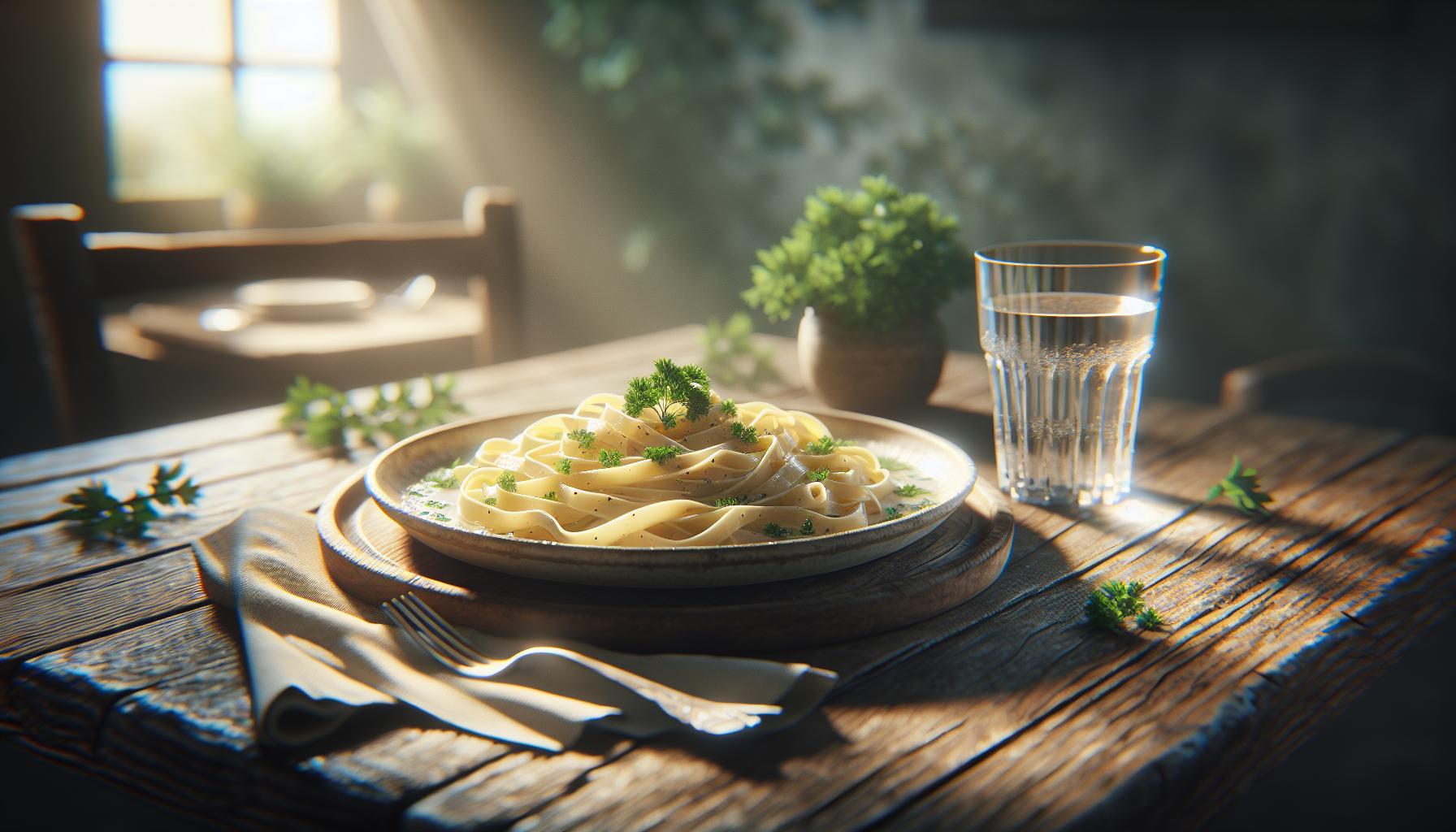Craving those endless breadsticks and creamy fettuccine alfredo? Olive Garden has been serving up Italian-American comfort food since 1982, but those delicious dishes often come with a side of caloric surprise. Understanding the nutrition facts behind these popular menu items can help diners make informed choices without sacrificing the flavors they love.
Whether you’re watching your waistline or managing dietary restrictions, knowing what’s on your plate at Olive Garden is essential. From lighter fare options to indulgent classics, the restaurant chain offers detailed nutritional information for every dish they serve. By diving into the calories, fat content, and sodium levels of these beloved menu items, guests can customize their dining experience to align with their health goals while still enjoying that famous hospitality.
Olive Garden Nutrition Info
Olive Garden provides detailed nutritional information for every menu item through their website and in-restaurant resources. This transparency enables guests to make informed decisions about their meal choices.
Calories and Portion Sizes
Olive Garden’s entrées range from 140 to 1,830 calories per serving. A typical pasta dish contains 800 to 1,200 calories, while lighter fare options feature 500 calories or less. The restaurant’s signature breadsticks contain 140 calories each, with unlimited servings available during meals. Popular dishes like Fettuccine Alfredo contain 1,010 calories per serving, while the Create Your Own Pasta combinations vary from 650 to 1,830 calories depending on sauce and protein selections. Portion sizes at Olive Garden are generous, with many entrées providing enough food for two meals.
Sodium and Fat Content
The sodium content in Olive Garden dishes ranges from 460mg to 3,830mg per serving. Cream-based sauces typically contain 40 to 75 grams of fat, while tomato-based options average 15 to 25 grams. The Classic Chicken Parmesan contains 1,060mg of sodium and 38 grams of fat. Salads with dressing add 350 to 770mg of sodium and 15 to 35 grams of fat per serving. The restaurant offers customization options to reduce sodium and fat content, including oil-based dressings, grilled proteins and whole wheat pasta alternatives.
Popular Entrees and Their Nutritional Values

Olive Garden’s menu features diverse entrees with varying nutritional profiles. Here’s a detailed breakdown of popular menu items and their nutritional content.
Pasta Dishes
Traditional pasta entrees at Olive Garden contain substantial caloric content due to their portion sizes and sauce compositions. The Classic Fettuccine Alfredo contains 1,010 calories with 65g of fat and 1,130mg of sodium. Tour of Italy, combining Homemade Lasagna, Chicken Parmigiana and Fettuccine Alfredo, delivers 1,830 calories with 108g of fat and 3,830mg of sodium. Lighter options include Spaghetti with Marinara at 640 calories and Whole Wheat Linguine with Traditional Marinara at 570 calories.
| Pasta Dish | Calories | Fat (g) | Sodium (mg) |
|---|---|---|---|
| Fettuccine Alfredo | 1,010 | 65 | 1,130 |
| Tour of Italy | 1,830 | 108 | 3,830 |
| Spaghetti with Marinara | 640 | 12 | 1,270 |
| Whole Wheat Linguine | 570 | 10 | 1,150 |
Chicken and Seafood Options
Protein-focused entrees offer alternative nutritional profiles to pasta-based dishes. Herb-Grilled Salmon provides 460 calories with 28g of protein and 4g of carbohydrates. Chicken Margherita contains 540 calories and 63g of protein. Shrimp Scampi features 510 calories with 39g of protein and 1,680mg of sodium.
| Protein Entree | Calories | Protein (g) | Sodium (mg) |
|---|---|---|---|
| Herb-Grilled Salmon | 460 | 28 | 1,110 |
| Chicken Margherita | 540 | 63 | 1,450 |
| Shrimp Scampi | 510 | 39 | 1,680 |
Healthiest Menu Options at Olive Garden

Olive Garden offers several nutritious menu items that align with various dietary preferences. These selections provide balanced nutrition while maintaining the restaurant’s signature Italian flavors.
Low-Calorie Choices
The Herb-Grilled Salmon stands out as a protein-rich option with 460 calories per serving accompanied by parmesan-garlic broccoli. Minestrone Soup contains 110 calories per bowl making it an excellent starter choice. The Famous House Salad without dressing offers just 70 calories while providing essential nutrients through fresh vegetables. Guests can opt for the Chicken Margherita at 540 calories which features grilled chicken breast topped with fresh tomatoes basil. The Whole Wheat Linguine with Traditional Marinara provides 570 calories with 12g of fiber per serving.
Heart-Healthy Selections
The Mediterranean-inspired dishes prioritize lean proteins heart-healthy fats. Shrimp Scampi with whole grain linguine contains 510 calories with omega-3 fatty acids from seafood. The Chicken Giardino features grilled chicken mixed vegetables in a light herb sauce at 530 calories. Oil-based dressings like the Light Italian offer healthier alternatives to cream-based options at 30 calories per serving. Fresh vegetable sides include Steamed Broccoli at 35 calories Garden Veggies at 40 calories per serving. Guests can customize any pasta dish with whole wheat pasta to increase fiber content reduce refined carbohydrates.
| Heart-Healthy Item | Calories | Protein (g) | Fiber (g) |
|---|---|---|---|
| Herb-Grilled Salmon | 460 | 43 | 4 |
| Chicken Giardino | 530 | 45 | 8 |
| Whole Wheat Linguine | 570 | 20 | 12 |
| Minestrone Soup | 110 | 5 | 3 |
Hidden Sources of Calories

Olive Garden menu items contain unexpected calorie sources that extend beyond main dishes. Understanding these hidden calories helps diners make informed choices when ordering their meals.
Breadsticks and Salad
Each Olive Garden breadstick contains 140 calories with additional 1-2 grams of fat from the buttery topping. The Famous House Salad starts at 70 calories per serving without dressing but reaches 290 calories when topped with signature Italian dressing. Croutons add 30 calories per serving while black olives contribute 35 calories. A typical guest consumes 2-3 breadsticks before their main course arrives adding 280-420 extra calories to their meal.
Sauces and Dressings
Cream-based sauces pack significant calories into Olive Garden dishes. Alfredo sauce adds 440 calories per serving while Five Cheese Marinara contains 320 calories per portion. Italian dressing contributes 220 calories per serving to salads. Meat sauce adds 280 calories to pasta dishes. Garlic butter sauce for breadsticks contains 90 calories per serving. Lower-calorie alternatives include Traditional Marinara at 140 calories Fresh Tomato Pomodoro at 120 calories per serving.
Tips for Healthier Dining at Olive Garden
Making mindful choices at Olive Garden enables diners to enjoy Italian cuisine while maintaining nutritional goals. Here’s how to optimize meal selections for better health outcomes.
Menu Modifications
Smart substitutions create healthier versions of classic Olive Garden dishes. Requesting whole wheat pasta adds 7g of fiber per serving compared to regular pasta. Choosing marinara sauce over Alfredo reduces fat content by 50g per serving. Ordering grilled chicken instead of breaded varieties cuts calories by 200-300 per portion. Vegetable-based sides like broccoli or asparagus replace higher-calorie options such as fettuccine. Oil-based dressings contain 50% fewer calories than creamy alternatives. Customizing proteins with “grilled” preparation methods eliminates extra breading calories. Selecting clear-broth soups like Minestrone provides 110 calories versus cream-based options at 250+ calories.
Portion Control Strategies
Splitting entrées reduces caloric intake by 50% while maintaining the dining experience. Requesting a to-go box at the start of the meal helps set aside half the portion immediately. Limiting breadsticks to one per person prevents consuming excess calories from complimentary items. Starting with a side salad using dressing on the side controls dressing portions effectively. Ordering appetizer portions of pasta dishes provides right-sized servings at 400-500 calories. Sharing desserts among multiple diners cuts sugar intake significantly. Selecting lunch-sized portions offers 30% fewer calories than dinner portions. Taking advantage of the unlimited soup or salad option provides filling lower-calorie alternatives.

